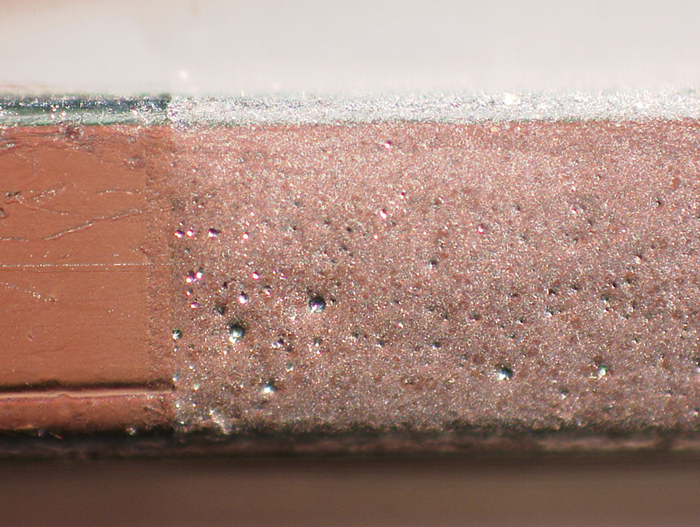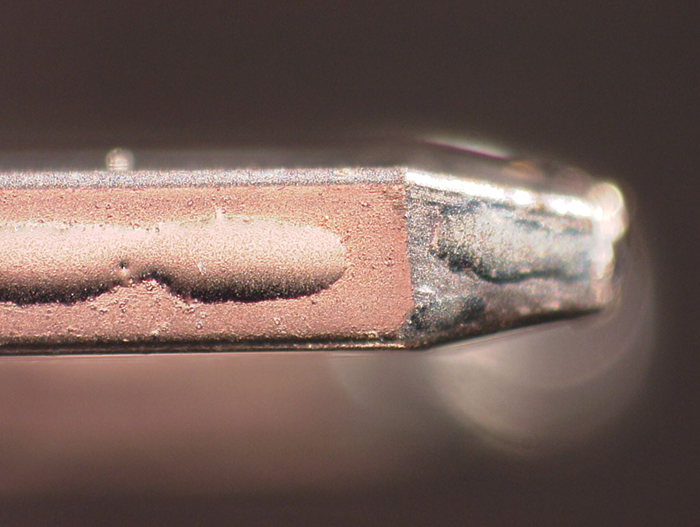Plating Pin Outgassing

When micro-voids appear on solder joints, it might not be the solder to blame.
Plating outgassing on component termination and PCB surface finishes does occur and can lead to micro-voids in solder joints on through-hole and surface-mount joints. Under x-ray inspection, often many very small voids can be seen at the interface between the solder and surfaces being joined. Often in reflow, the paste or profile is blamed, but a good engineer will examine all the parts that make up the joint.
It is possible to very simply heat and solder the surface of a termination under high magnification with a soldering iron to look for gassing from the surface of the plating. In the case of components, the most common surface coating for terminations is tin. Often poor control of the plating chemistry permits organic material to be plated to the surface of the parts, which then gasses during soldering.
In the case of surface-mount parts, reflow a board printed with paste and the components placed while watching the surface of the plated termination. This can be videoed to see the outgassing or simply to observe the reaction. It is possible to do this under a standard microscope or in a reflow simulator with video camera. This is a useful failure analysis technique for investigating process problems that normally cannot be seen. Several micro-voids in a joint interface are much more likely to weaken the solder joint than a single large void.

Figure 1. Outgassing on a component lead surface.

Figure 2. Outgassing can be caused by poor plating during fabrication.
These are typical defects shown in the National Physical Laboratory’s interactive assembly and soldering defects database. The database (http://defectsdatabase.npl.co.uk), available to all this publication’s readers, allows engineers to search and view countless defects and solutions, or to submit defects online. To complement the defect of the month, NPL features the Defect Video of the Month, presented online by Bob Willis. This describes over 20 different failure modes, many with video examples of the defect occurring in real time.
is a consultant at the National Physical Laboratory (npl.co.uk); martin.wickham@npl.co.uk. His column appears monthly.




